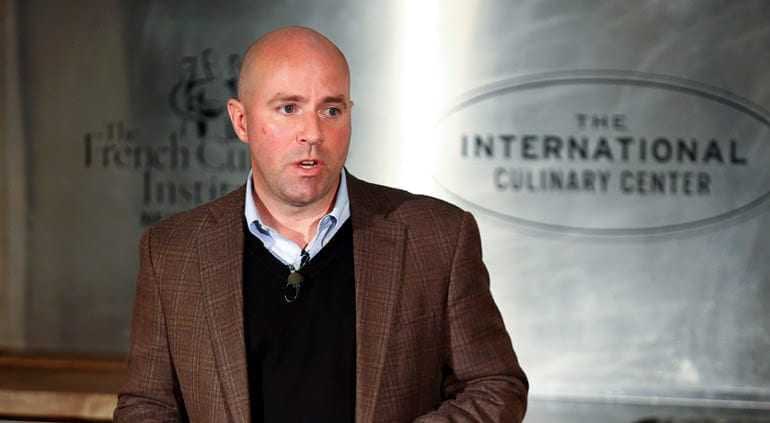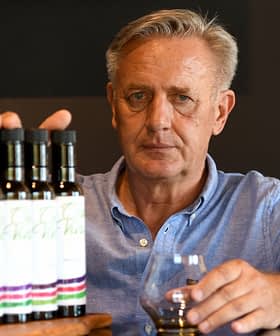
Gregg Kelley, CEO of the California Olive Ranch knows that the olive oil industry is troubled, but sees signs of hope for a brighter future. Speaking at the New York International Olive Oil Competition conference today, Kelley said that the industry is beset by a lack of consumer knowledge and “silent competitive threats,” but there are indications of great growth potential.
“Consumers do not know about the quality of the olive oils put in front of them” and because of that, price, not quality, is the primary driver in sales, said Kelley. Listing the top-selling olive oil brands in the U.S. Kelley asked fellow producers attending the sold-out event audience whether they could match the prices of the popular labels. “Can anyone here put a half-liter of olive oil on the market for $2.81? I don’t think so. Neither can we.”
Kelley explained that without sufficient understanding of quality differences, people buy what is on sale or buy familiar brands. He added that consumers are increasingly buying private labels because they “don’t see the difference between them and the big brands.”
Another problem facing the industry is a competitive threat from other types of oil producers, said Kelley. He stated that coconut and avocado oil consumption rates are “going through the roof” and that producers of corn and seed oils are genetically modifying their products to allow them to be marketed as being “as healthy as olive oil.”
Despite industry troubles, Kelley is optimistic about the future of the olive oil business. After analyzing olive oil consumption by country, Kelley concluded that U.S. consumers should be purchasing three times more olive oil than they currently do. He predicts that a large growth in consumption will occur and that educated consumers will be willing to pay greater prices for quality oil.
Kelley compared the olive oil industry to other food movement trends that started in California and ended up revolutionizing their industries. He noted that Alice Waters stimulated the organic food and farm to table movements that spread to the rest of the country. The advent of the California wine industry and its quality product doubled wine consumption rates in the U.S. And, when a California mandarin producer decided to brand “Cuties” mandarins, mandarin sales “rose to a level no one would have thought possible ten years ago,” said Kelley.
The fundamental shifts in the food industries did not just benefit U.S. producers, but also international producers who saw consumption growth as well. “The rising tide has floated all boats.”
The secret ingredient that will allow the olive oil industry to have success similar to the wine and mandarin industries is consumer education, explained Kelley. Consumers need to understand what constitutes a better olive oil and how it will improve their lives and be worth the extra money, added Kelley.
Kelley, the chief executive of the largest American olive oil producer, described how Starbucks changed the face of coffee consumption in the U.S. by “providing consumers with an experience and an education,” and that the olive oil industry can offer consumers a similar education and appreciation for olive oil.
Evidence of the “green shoots of fundamental change” in the olive oil world is already here, said Kelley. While collective growth in retail sales of leading brands in the U.S. has only been about one percent per year, some U.S. brands that are producing quality products and are transparent about the quality have been realizing substantial growth, Kelley explained. He cited the California Olive Ranch’s 50 percent annual growth rate, Lucini’s 18 percent growth and Chile’s O‑Live double digit growth rate as examples of the change.
Consumer education is the key. Companies such as Veronica Foods and We Olive are offering oils from around the world and olive oil experiences that are critical to the growth of the industry, said Kelley. His own company engages in tasting events and works extensively with intermediaries, as well as retailers. Kelley believes the mission of California producers is to “show Americans what great olive oil tastes like.”








